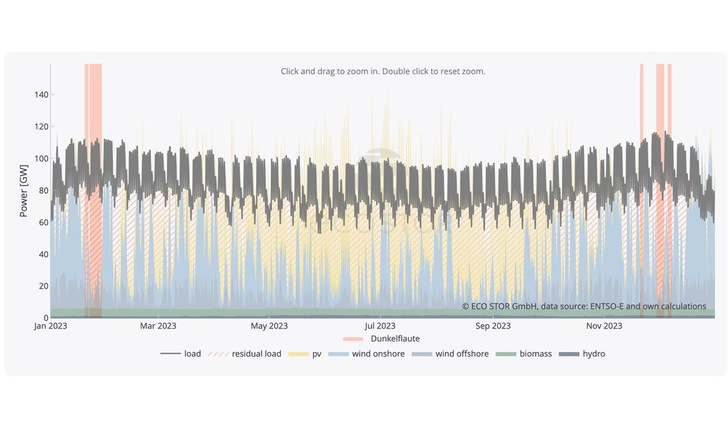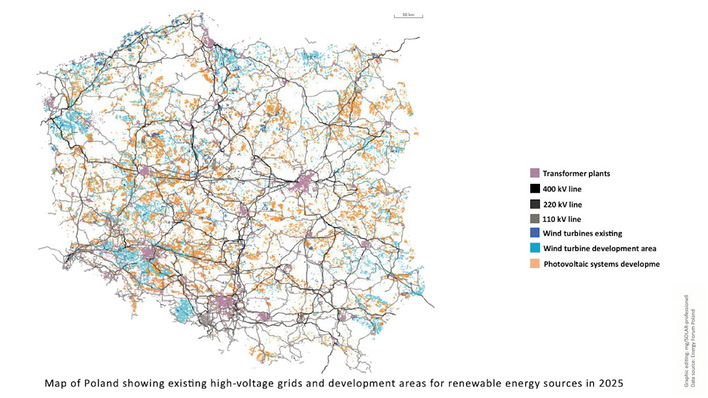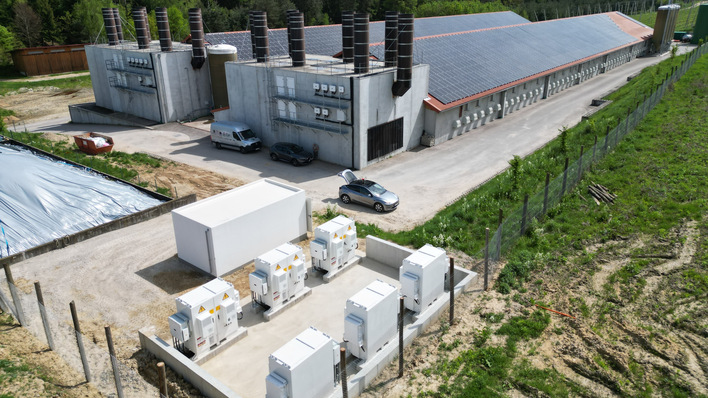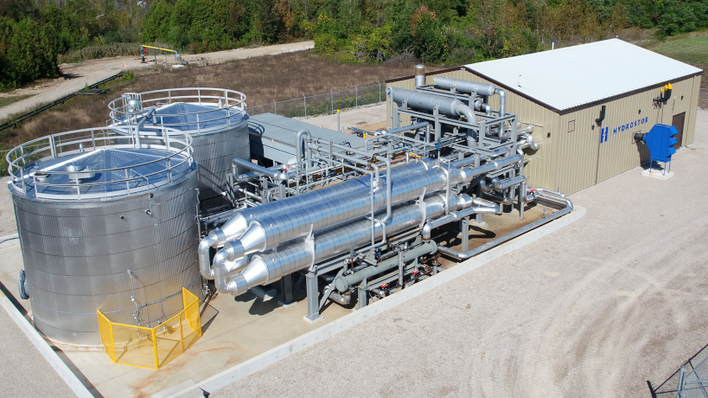How many storage systems are necessary for the energy transition to succeed? Eco Stor has looked into this question. The result is a tool that can be used to calculate the necessary flexibility in the electricity grid. The development centred on the question of how we can achieve a CO2-free power supply at minimum cost.
See also: 10 innovative solutions compete for the EES Award
Battery storage systems are currently becoming more cost-effective. They can quickly and effectively fill short-term supply gaps in the electricity grid. As a result, the grid can also absorb more renewable electricity, most of which is generated volatilely by photovoltaic and wind power plants. However, battery storage systems will not be able to fill the long-term gaps. Reserve power plants are still needed to supply electricity when required. But how much reserve capacity of this kind is still needed?
Power grid modelled
The Eco Stor data science team has been working on the development of an optimised electricity system. The result is a powerful storage unit dashboard that simulates the German power grid. This real-life laboratory can be used to simulate various expansion scenarios for storage capacities based on real load and generation data. Depending on how much power and battery storage capacity is integrated into the system, the tool determines the necessary reserve capacities that are still needed.
Also interesting: ees Europe 2024: Orientation in the growth market
The aim is to provide assistance in the further development of the future energy system. "The energy transition concerns us all. That's why we want to make this tool available for public use free of charge," explain the three Managing Directors of Eco Stor Johanna Jungbauer, Ulrich Bürger and Georg Gallmetzer.
Flexible loads taken into account
The tool not only takes into account large battery storage systems that are currently being installed at various grid nodes. Many other storage units will also help to provide the necessary short-term capacities in the future. These include not only home storage systems, but also the batteries of electric vehicles. Last but not least, flexible loads in industry and households can also play their part in stabilising the system.
Integrated data from 2020 to 2023
When developing the tool, the experts at Eco Stor made sure that it was easy to use and, above all, self-explanatory. An online helper is also available for the introduction, which explains the most important steps in advance. To set up the model as realistically as possible, the real generation and consumption data for the years 2020 to 2023 was used as a basis.
Run through various scenarios
Based on this data, users can run through various scenarios. They can vary the expansion of wind and solar power. However, users can also select different values for the increasing electricity demand due to sector coupling and the expansion of battery storage and thus extrapolate the future supply mix. At the end, the remaining supply gaps are displayed, for which reserve power plants may still be required.
Electricity trading not taken into account
The tool utilises certain simplifications. For example, it does not take regional grid bottlenecks into account and cross-border electricity trading is not included in the calculation. Users of the tool should be aware of this, as cross-border electricity trading in particular will reduce the need for reserve power plants and also the need for battery storage. The storage unit dashboard thus provides a maximum scenario that users can use as a guide. (su/mfo)









